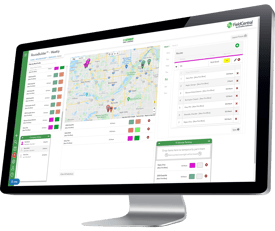 When it comes to the landscape management and design industry, estimates and quotes are an integral part of the business. Customers and potential customers want to know what they will have to pay, before they have to pay it. Below are a couple “rules of thumb” that I have picked up from my years running an irrigation business when it comes to providing estimates for customers.
When it comes to the landscape management and design industry, estimates and quotes are an integral part of the business. Customers and potential customers want to know what they will have to pay, before they have to pay it. Below are a couple “rules of thumb” that I have picked up from my years running an irrigation business when it comes to providing estimates for customers.
Avoid phone estimates. A phone estimate doesn’t benefit anyone. If the price you provide over the phone is too high, the customer will just hang up and call your competitor. The phone does not give you an adequate way to show your work, present payment options, or actually see the customer’s property and figure in all costs.
Tell the customer you need to see the land level, type of soil, etc to give them a proper and accurate quote. Whether this is true or not, it will give you chance to meet the customer in person, giving you a chance to build a relationship and rapport with the customer. Gaining the customer’s trust is half the battle in sealing the deal.
It is also beneficial to see the property firsthand. You never know what the turf and landscape management job will entail or require, and it is better to see it in person so you can go back to your office and properly draw up an estimate. No one likes being charged more than what was initially presented to them. Seeing the property prior to drawing up an estimate will save you from having payment issues in the future.
Do not give the lowest bid just to get the job. By competing for the lowest bid, you are hurting your business in a couple different ways.
If you run into problems on the job, you’re screwed. You didn’t budget enough money to handle disruptions to the original plan, and the money will have to come out of your own pocket.
You are also making it very difficult for your company to make any profit and consequently grow. Giving customers a deal once in a while is fine, especially long-time, loyal customers. But if you provide the lowest bid to one customer, they may tell their friends, and you will have to provide that same price model for all of their references. This limits any future profit, and doesn’t bode well for your company.
Instead of competing for the lowest bid, try explaining to your customer what will be involved in the job and why the bid may seem high compared to the lowballers you are up against. Explaining in detail how much labor, materials, etc. cost is a better way to approach a higher priced job than just handing them a total.
Also bring pictures and references to any consultation. Pictures help to showcase your work. People like visuals so they can get an idea in their head and showing pictures could also help you upsell the customer if they see and like something they otherwise would not have known about.
Provide your customers with options. You could offer alternative materials or split the jobs up so that they are not paying as much, all at once. You can also offer payment plans for customers whose budgets don’t stretch that far. Providing payment plans allows your customer’s to still benefit from your excellent service, without breaking the bank or going with a “cheaper” job.
Giving estimates and quotes are tricky situations. You want to be honest with the customer, but you don’t want to scare them away. In the end though, honesty is the best policy. Educate customers about what differentiates you from the competition so they can make a decision that isn’t based solely on price. Doing so will turn into a win/win – you get higher margins, they get higher quality work.







